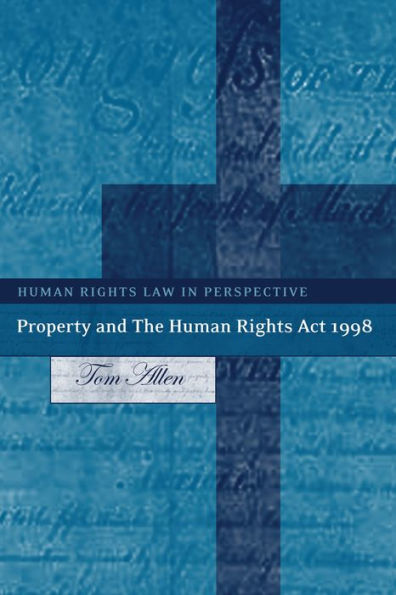Property and The Human Rights Act 1998
By giving further effect to the European Convention on Human Rights,the Human Rights Act 1998 has had a significant effect on property law. Article 1 of the First Protocol to the Convention is particularly important, as it protects against the interference with the enjoyment of possessions. Compulsory acquisition, insolvency, planning, taxation, environmental regulation, and landlord and tenant laws are just some of the fields where the British and European courts have already had to assess the impact of the Protocol on private property. The Human Rights Act 1998 also restricts the scope of property rights, as some Convention rights conflict with rights of private property. For example, the Article 8 right to respect for the home has been used to protect against environmental harm, in some cases at the expense of property and economic rights.
This book seeks to provide a structured approach to the extensive case law of the European Court of Human Rights and the UK courts on these issues, and to provide guidance on the direction the law is likely to take in future. Chapters cover the history and drafting of the relevant Convention rights, the scope and structure of the rights (especially Article 1 of the First Protocol), and how, through the Human Rights Act 1998, the Convention rights have already affected and are likely to affect developments in selected areas of English law.
1007376978
This book seeks to provide a structured approach to the extensive case law of the European Court of Human Rights and the UK courts on these issues, and to provide guidance on the direction the law is likely to take in future. Chapters cover the history and drafting of the relevant Convention rights, the scope and structure of the rights (especially Article 1 of the First Protocol), and how, through the Human Rights Act 1998, the Convention rights have already affected and are likely to affect developments in selected areas of English law.
Property and The Human Rights Act 1998
By giving further effect to the European Convention on Human Rights,the Human Rights Act 1998 has had a significant effect on property law. Article 1 of the First Protocol to the Convention is particularly important, as it protects against the interference with the enjoyment of possessions. Compulsory acquisition, insolvency, planning, taxation, environmental regulation, and landlord and tenant laws are just some of the fields where the British and European courts have already had to assess the impact of the Protocol on private property. The Human Rights Act 1998 also restricts the scope of property rights, as some Convention rights conflict with rights of private property. For example, the Article 8 right to respect for the home has been used to protect against environmental harm, in some cases at the expense of property and economic rights.
This book seeks to provide a structured approach to the extensive case law of the European Court of Human Rights and the UK courts on these issues, and to provide guidance on the direction the law is likely to take in future. Chapters cover the history and drafting of the relevant Convention rights, the scope and structure of the rights (especially Article 1 of the First Protocol), and how, through the Human Rights Act 1998, the Convention rights have already affected and are likely to affect developments in selected areas of English law.
This book seeks to provide a structured approach to the extensive case law of the European Court of Human Rights and the UK courts on these issues, and to provide guidance on the direction the law is likely to take in future. Chapters cover the history and drafting of the relevant Convention rights, the scope and structure of the rights (especially Article 1 of the First Protocol), and how, through the Human Rights Act 1998, the Convention rights have already affected and are likely to affect developments in selected areas of English law.
130.0
In Stock
5
1

Property and The Human Rights Act 1998
356
Property and The Human Rights Act 1998
356Hardcover
$130.00
130.0
In Stock

Product Details
| ISBN-13: | 9781841132037 |
|---|---|
| Publisher: | Bloomsbury Academic |
| Publication date: | 09/22/2005 |
| Series: | Human Rights Law in Perspective , #7 |
| Pages: | 356 |
| Product dimensions: | 6.14(w) x 9.21(h) x 0.81(d) |
About the Author
From the B&N Reads Blog
